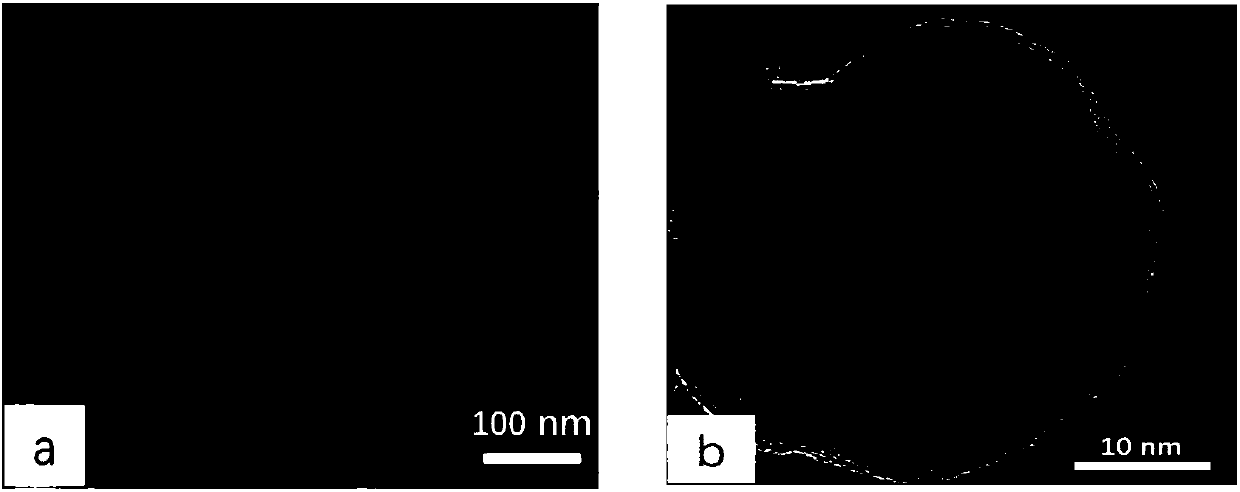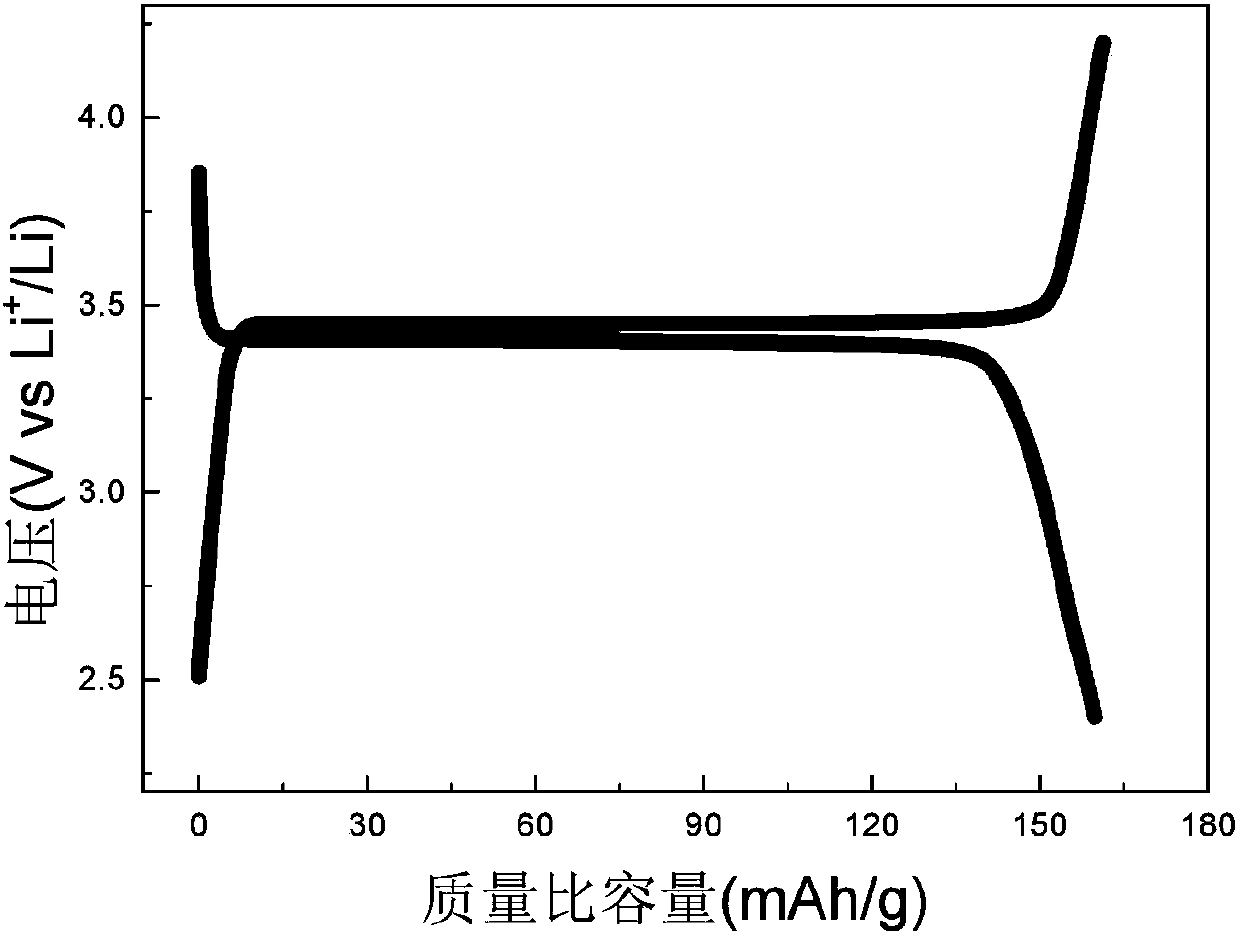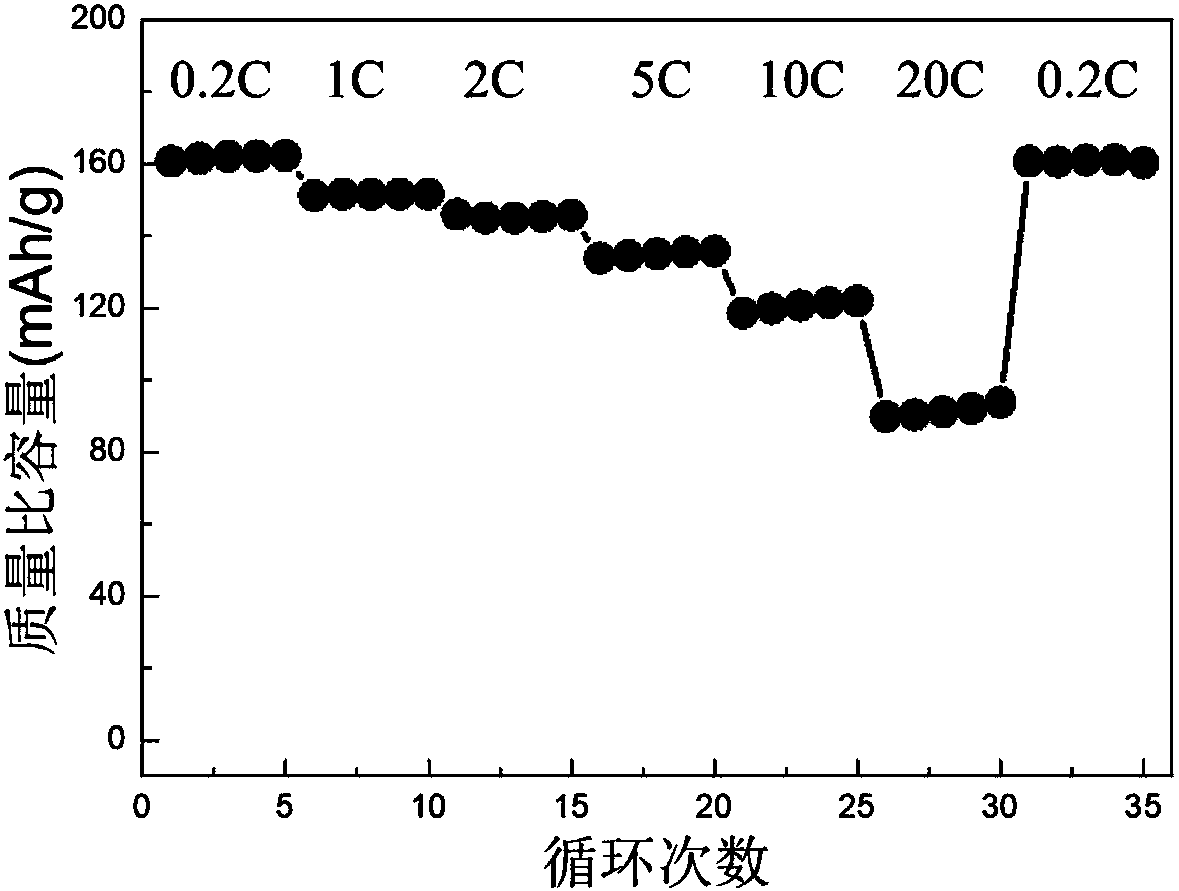Method for synthesizing graphene/carbon-coated lithium iron phosphate small-scale nanometer composite material by aniline polymerization confinement effect
A technology of carbon-coated lithium iron phosphate and nanocomposite materials, which is applied to electrical components, electrochemical generators, battery electrodes, etc., can solve the problems of poor high-rate charge and discharge performance, difficult lithium ion transmission, and poor conductivity, and achieve Increased electronic conductivity, short transmission distance, and low production cost
- Summary
- Abstract
- Description
- Claims
- Application Information
AI Technical Summary
Problems solved by technology
Method used
Image
Examples
Embodiment 1
[0034] Embodiment 1: The graphene / carbon-coated lithium iron phosphate small-scale nanocomposite material described in this embodiment is prepared by the following steps:
[0035]Step 1: At room temperature, disperse graphene oxide and ferric salt (ferric chloride) in deionized water, then add ammonium persulfate, and mix well to obtain solution A, wherein graphene oxide, ferric ion, The mass ratio of ammonium persulfate to deionized water is 0.15:1:0.12:75;
[0036] Step 2: at room temperature, dissolve phosphate (ammonium dihydrogen phosphate) in deionized water, add aniline, and mix well to obtain solution B. The molar ratio of phosphate and deionized water to ferric salt in solution A is 1:450:1, and the molar ratio of aniline in solution B to ferric salt in solution A is 1:1;
[0037] Step 3: Under room temperature and continuous stirring (1000rpm), quickly drop solution A into solution B, and continue stirring for 6 hours to obtain (graphene oxide / polyaniline-coated sma...
Embodiment 2
[0046] Embodiment 2: The graphene / carbon-coated lithium iron phosphate small-scale nanocomposite material described in this embodiment is prepared by the following steps:
[0047] Step 1: At room temperature, disperse graphene oxide and ferric salt (ferric nitrate) in deionized water, then add ammonium persulfate, and mix well to obtain solution A, wherein graphene oxide, ferric ions, persulfate The mass ratio of ammonium sulfate to deionized water is 0.15:1:0.12:75;
[0048] Step 2: At room temperature, dissolve phosphate (ammonium monohydrogen phosphate) in deionized water, then add aniline, and mix well to obtain solution B. The molar ratio of phosphate and deionized water to the ferric salt in solution A is 1:450:1, and the molar ratio of aniline in solution B to ferric salt in solution A is 1:1;
[0049] Step 3: Under room temperature and continuous stirring (1000rpm), quickly drop solution A into solution B, and continue stirring for 8 hours to obtain (graphene oxide / po...
PUM
| Property | Measurement | Unit |
|---|---|---|
| density | aaaaa | aaaaa |
Abstract
Description
Claims
Application Information
 Login to View More
Login to View More - R&D
- Intellectual Property
- Life Sciences
- Materials
- Tech Scout
- Unparalleled Data Quality
- Higher Quality Content
- 60% Fewer Hallucinations
Browse by: Latest US Patents, China's latest patents, Technical Efficacy Thesaurus, Application Domain, Technology Topic, Popular Technical Reports.
© 2025 PatSnap. All rights reserved.Legal|Privacy policy|Modern Slavery Act Transparency Statement|Sitemap|About US| Contact US: help@patsnap.com



